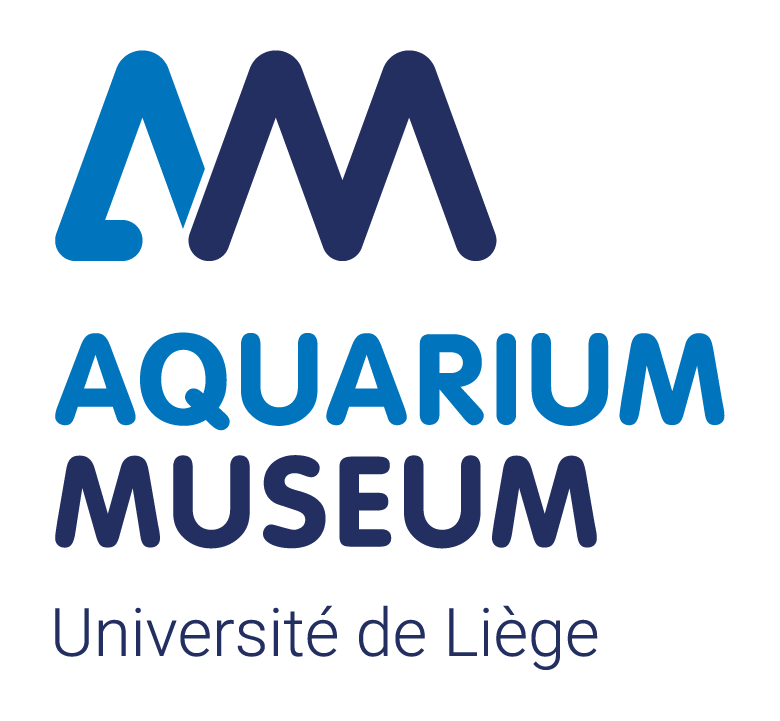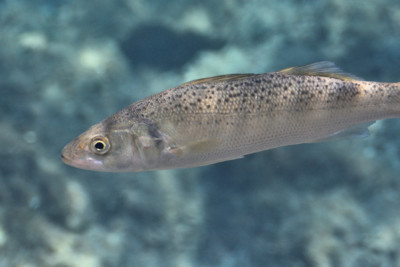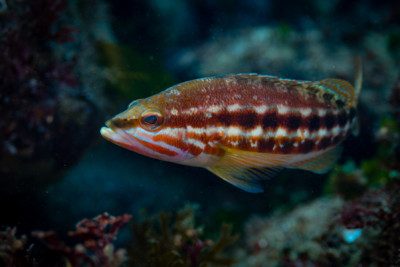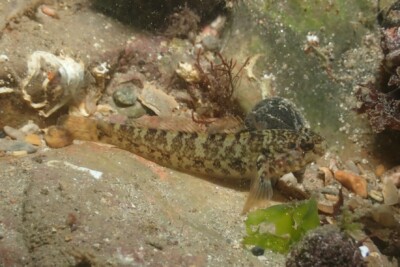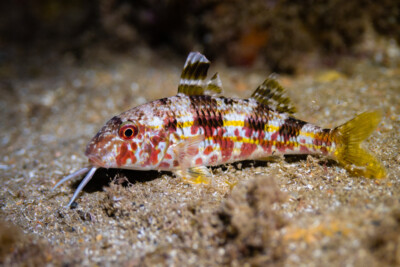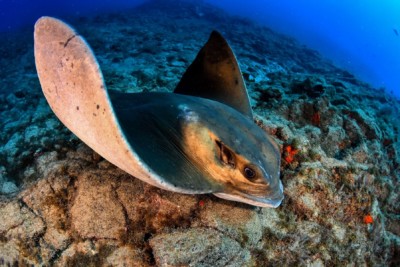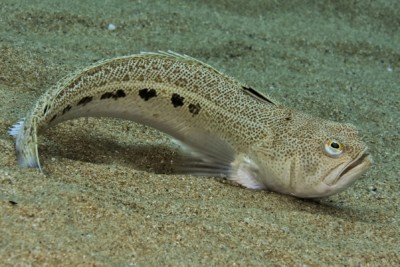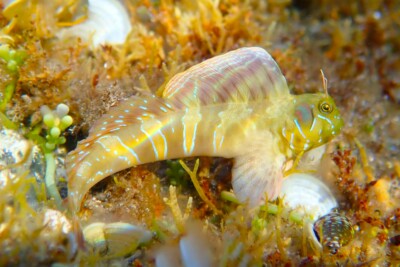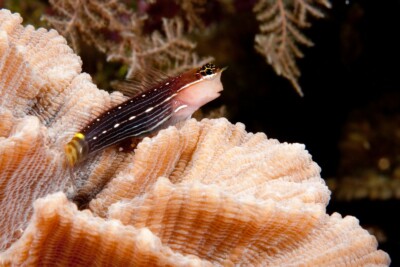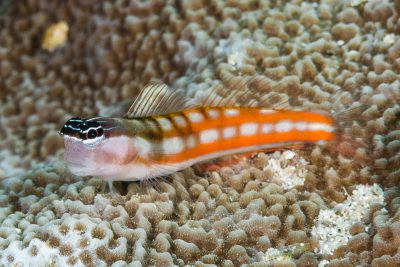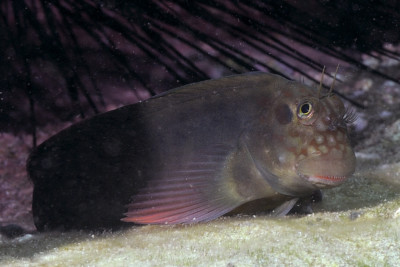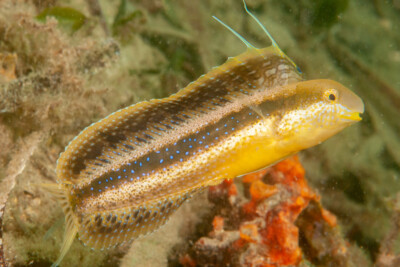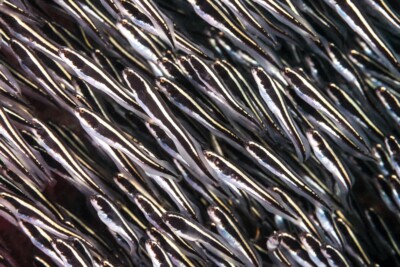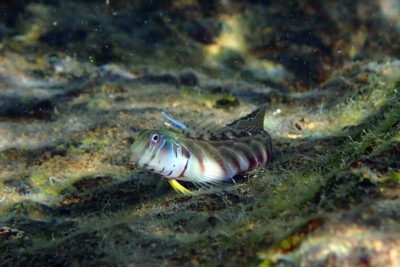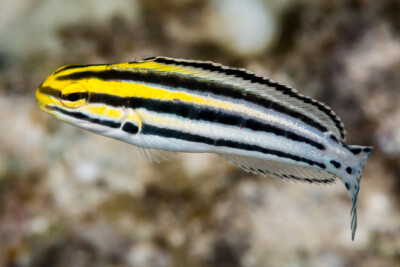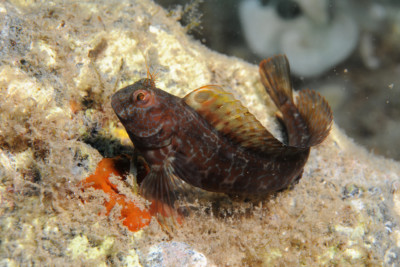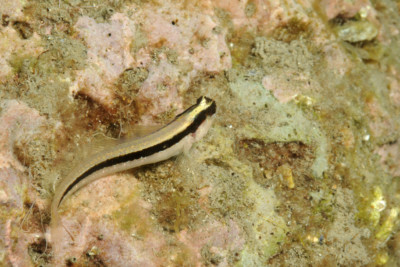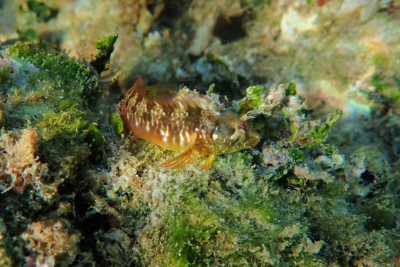tompot blenny
| Family | Blenniidae |
|---|---|
| Genus | Parablennius |
| IUCN category (World) | LC |
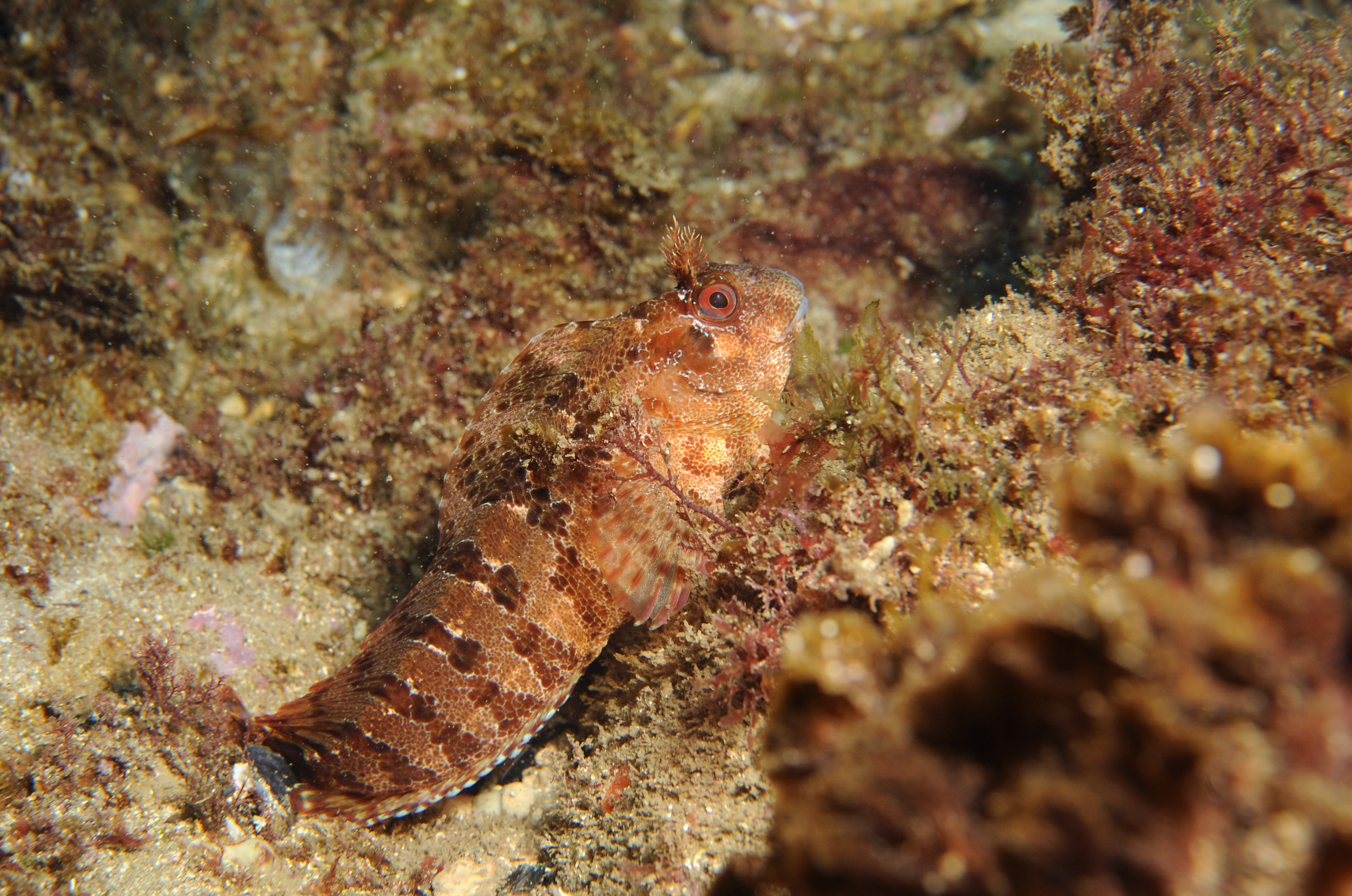

Introduction
The tompot blenny, also known as cabot, is a fish mainly found in the Mediterranean Sea. It is also present from the Strait of Gibraltar to the North Sea.
Who is it?
Morphology
-
Average size18 cm
-
Maximum size30 cm
-
ShapeRectangular
-
Mimicrystone
-
Average size18 cm
-
Maximum size30 cm
-
ShapeRectangular
-
Mimicrystone
How to recognize This fish ?
The body is massive, elongated and laterally compressed. This tompot blenny is beige and brown, sometimes greenish, marbled with yellow-orange spots. The sides are striped with 6 to 8 dark vertical bands.
The irregular dorsal fin starts just after the head.
It has short, "fluffy" tentacles above the eyes and at the level of the nostrils.
Sexual dimorphism
The tentacles above the eyes are more prominent in males.
Behaviour & Life cycle
-
dietomnivorous
-
Sociabilitysolitary
-
territorialYes
-
Way of livingdiurnal
Solitary like other blennies, adults live in rocky areas where they "graze" on algae and small invertebrates. Juveniles prefer seagrass beds where they seek shelter from predators.
Reproduction
-
Reproductionovipare qui pond sur substrat caché
This oviparous fish breeds when the water warms up in spring. Territorial males prepare a nest where the female will lay eggs. The male then guards the eggs for about a month until they hatch.
Harmless species
This species does not pose a particular danger to humans if encountered in its natural habitat.
Origin and distribution
What is its habitat?
Natural environment characteristics
-
Depth0 - 32 m
Biotope presentation
The tompot blenny is commonly seen near the shore. It can easily be spotted, especially in tidal pools. It frequents rocky bottoms covered with algae and plant debris.
Species of the same biotope
Fishkeeping
Not recommended
We do not recommend keeping this species in an aquarium. It has unpredictable needs which, if not met, generate significant stress, potentially leading to a shorter life expectancy, an interruption of its growth or the development of pathogens.
To go further
Sources & Contributions
Participation & Validation
The Fishipedia team and specialist contributors are committed to providing high-quality content. However, although the information comes from scientific sources or testimonials from specialists, the cards may contain inaccuracies.

Adrien Falzon

Benoit Chartrer
Translation
Translation done with the valuable contribution of our translators, who make this information available to a wider audience. We sincerely thank them for their commitment.
Scientific partners
Tags
Species of the same family
Same genus
Species of the same biotope





